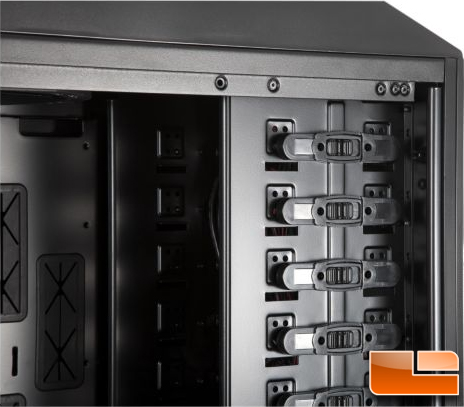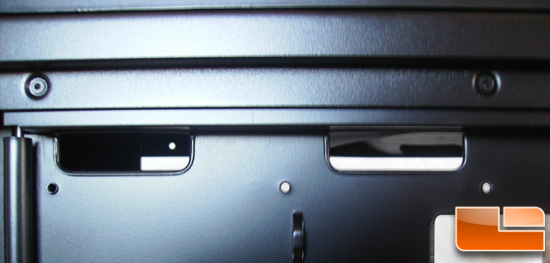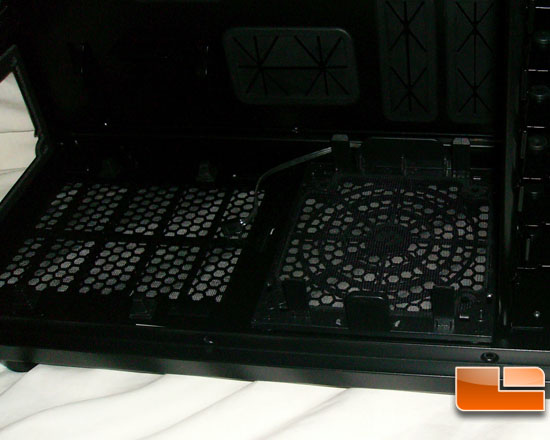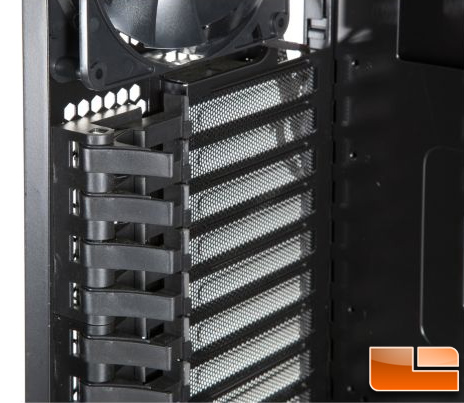Rosewill Thor XL-ATX Full Tower Gaming Case Review
Rosewill Thor Interior Impressions

Opening up the Rosewill Thor we can get a scope of just how massive this case really is. A very nice thing you may note is just about every hole in here has a grommet on it. Cable holes are also outlined for normal ATX boards, as well as the larger e-ATX and XL-ATX motherboards.

Moving up top, we have the tool-less bays of the Thor; this is a simple sliding latch system that works fairly well. There is also enough space with each that you can leave them disengaged and use 2 screws on each side of the 5.25″ bays to screw in a device.
Personally, the tool-less worked well so I wouldn’t recommend going to the hassle of using screws.

Moving over to the side some, we’ve got the Thor’s cable holes located at the top of the motherboard tray. These are definitely wide enough (0.8″ wide) and can fit dual 8pin EPS 12v connectors if needed.
You can also tell that the holes used without a grommet are simply not cut, but instead have the edges rolled in giving them a nice smooth look and feel.

Moving down to the bottom of the case; Rosewill included fan filters for both the PSU and the optional 140mm fan mount.
The 140mm fan mount can also fit a 120mm fan; you will just need to use screws but mounting a 140mm fan is tool-less as the clips hold the fan in place.
The PSU is raised up on 3/4″ rubber studs to reduce vibrations. They also have a gasket around the point which the PSU touches to the case to help reduce vibrations as well.

Here’s the rear tool-less PCI mechanism. This is a completely optional feature of the Thor and can be easily removed or replaced by unscrewing it from the back of the case with 6 screws.
On the other hand, I liked this tool-less mechanism a lot more than I thought I would. Many cases come with a plastic clip design and it usually does not work well but this mechanism is one of the most sturdy I have ever run into.
I will note that for most users, getting these latches into place is going to seem a bit extreme as they require a large amount of force to latch down once a PCI device is in the slot. However, this also uses some vibration reduction material when it makes contact with the PCI bracket of your graphics card, sound card, or anything else you use.

Comments are closed.